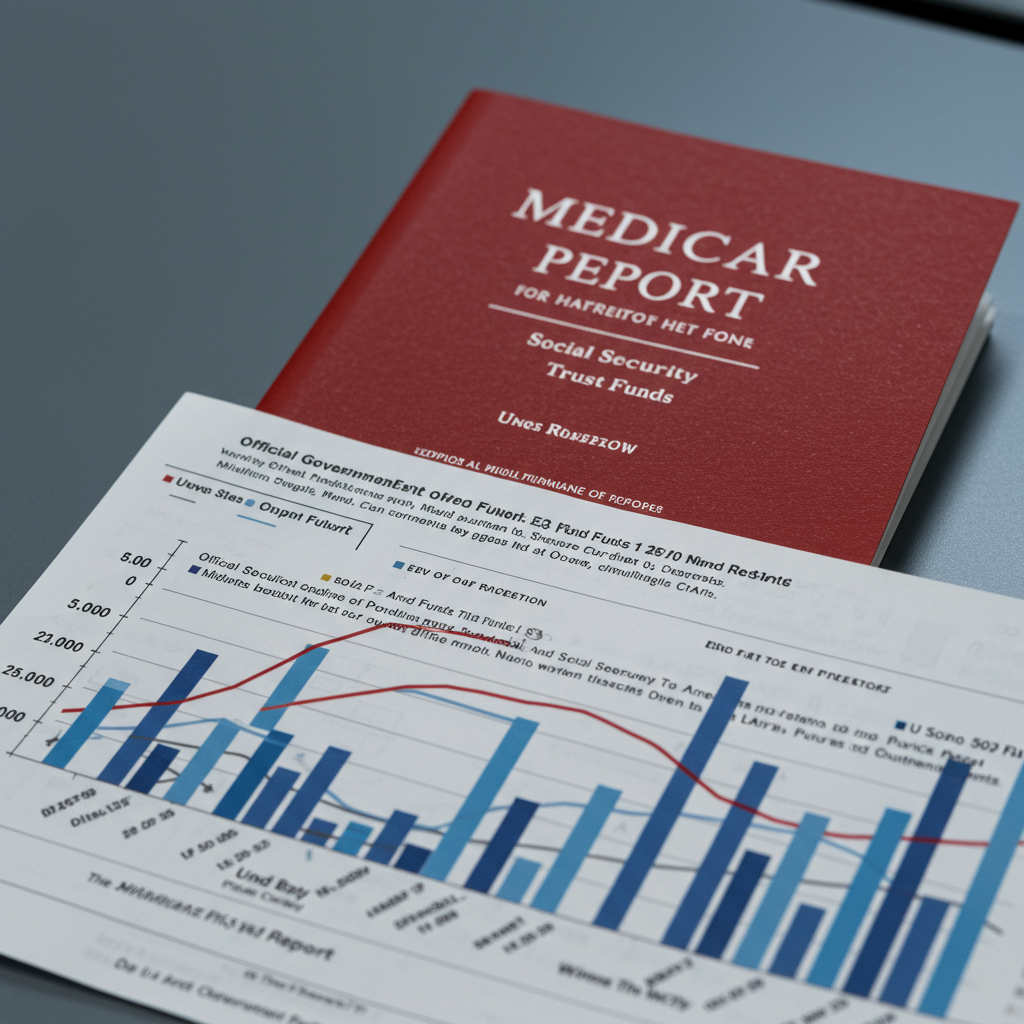The financial health of Social Security and Medicare is facing a critical juncture. According to a recent annual report from the programs’ trustees, the trust funds supporting these vital programs are projected to be depleted sooner than previously forecast, potentially leading to automatic benefit cuts within a decade if Congress does not act.
The report indicates that the Medicare Hospital Insurance (HI) trust fund, which covers inpatient hospital and hospice services, is now projected to exhaust its reserves in 2033. This is three years earlier than estimated in the previous year’s report.
While the Social Security Old-Age and Survivors Insurance (OASI) Trust Fund’s projected depletion date remains consistent with prior estimates at around eight years from now, the outlook for the combined Social Security funds (OASI and Disability Insurance) has slightly worsened compared to last year’s combined forecast, now projected for the third quarter of 2034.
Should these funds become depleted without legislative changes, automatic cuts would be triggered. The report warns this could mean a 23 percent reduction in scheduled Social Security benefits and an 11 percent reduction in Medicare hospital benefits starting in 2033.
Why the Dates Moved and Outlook Shifted
Several factors contributed to the updated projections, particularly the accelerated timeline for Medicare and the worsened overall Social Security status compared to last year’s combined forecast:
Rising Healthcare Costs: The earlier depletion date for the Medicare fund is largely attributed to higher-than-anticipated healthcare expenditures, especially for inpatient hospital and hospice services.
Increased Social Security Benefits: The recent enactment of the Social Security Fairness Act in January 2025 led to increased monthly benefits for over 3 million recipients, negatively impacting the combined program’s financial status over the long term despite not changing the OASI fund’s immediate depletion year projection.
Understanding the Financial Challenges
Beyond these recent changes, long-standing demographic and economic trends continue to pressure the system:
Declining Worker-to-Beneficiary Ratio: As people live longer and birth rates decline, there are fewer workers paying payroll taxes for each retiree receiving benefits. Social Security primarily operates as a pay-as-you-go system funded by current workers.
Wage Growth Concentration: A decreasing share of total national earnings is subject to Social Security’s payroll tax. Wage growth has been significantly concentrated among higher earners, whose income above the taxable maximum ($176,100 in 2025) is not taxed for Social Security. This means payroll taxes contribute a proportionally smaller amount to the funds over time compared to historical trends. The 75-year taxable payroll shortfall has slightly increased to 3.82 percent.
Impact on Millions of Americans
These potential shortfalls are significant, given the scale of the programs. Social Security paid nearly $1.47 trillion in benefits to about 68 million Americans last year. For a substantial portion of retirees, Social Security is a vital income source, accounting for at least half of their income for roughly half of seniors, and 90 percent or more for about 25 percent. Medicare covers approximately 67.6 million seniors and disabled individuals.
Potential Solutions on the Table
Addressing the looming funding gap will require action from Congress. Experts and advocacy groups point to several potential solutions, including:
Increasing the Payroll Tax Rate: The current combined employee and employer payroll tax rate for Social Security is 12.4 percent.
Raising the Full Retirement Age: Adjusting the age at which individuals can claim full benefits.
Lifting or Eliminating the Income Cap: Removing or raising the limit on earnings subject to the Social Security tax, a solution frequently cited by public commenters as a way to increase revenue from high-income earners.
Historically, Congress has acted to prevent past Social Security shortfalls, and analysts believe there is a political impetus to avoid automatic, deep benefit cuts. The report underscores the roughly eight-year window available for lawmakers to enact reforms before the Social Security OASI fund faces depletion, and an even shorter timeframe before the Medicare fund faces the same challenge.
Note: An earlier version of this article was based on a preliminary summary.*




